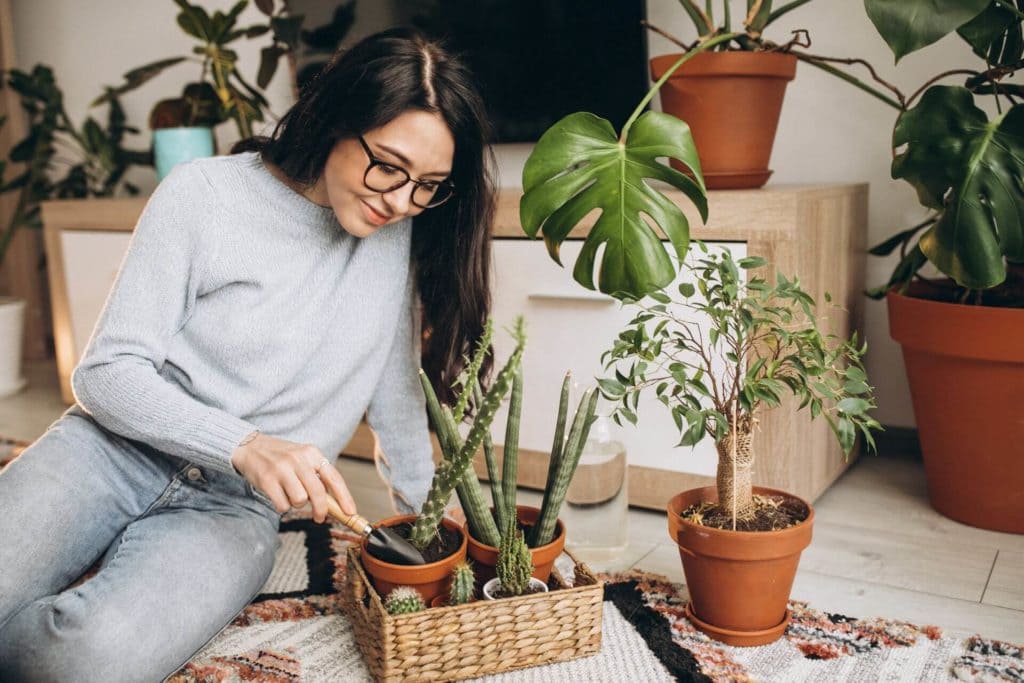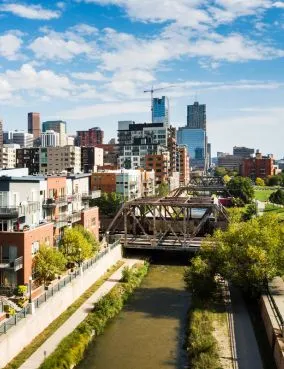It’s a universal truth that moving is challenging. When you throw in some delicate houseplants, you’re on the fast track to stress. While some people think moving houseplants is as difficult as moving the world’s heaviest refrigerator freezer, it is actually quite simple. No, you don’t have to abandon your plant babies like an old bin when you move; it’ll be a breeze with a few clever tactics. Here are our tips on how to move with plants safely:
1. Check to see whether your houseplant will survive the relocation.
Although indoor plants are typically more hardy, some may be harmed by changes in moisture levels. For some people, moving to excessively dry or humid climates may not be a good decision. When determining whether to bring or leave outdoor plants, consult a plant hardiness zone map and evaluate the climate, light, and rainfall in your new house.
If you can’t take your plant with you (or it’s not allowed), leave it with a friend, family member, or neighbor, or donate it to a local hospital or nursing home.
2. Select the appropriate pots.
Repot your plants into shatterproof containers three weeks before moving day to give them time to adjust to the new container before being transferred. Any bumps or unexpected movements won’t break anything, slice into your plant’s roots, or affect the soil if you use shatterproof containers.
You’ll want to repot each of your plants if you’re packing them to have movers stir them around for you. Whether you’re moving your plants in your car, you can determine whether the risk is worth it to repot them or if you’re confident in your ability to drive carefully enough to keep them safe.
3. Remove any dead leaves to make the overall size smaller
Pruning bigger plants may be necessary to bring them down to a manageable size and avoid branch breaking. Removing dead leaves and branches will also help your new plants grow better. Just make sure you’re not pruning anything that doesn’t need it.
Repotting and pruning your plants two to three weeks ahead of time will allow them to settle in and reduce the chance of shock when transplanted to a new setting.
4. Moving larger plants
If a plant is too large to fit in a box, taking a cutting could be a good compromise between going without your plant and jeopardizing the safety of your plant and other items. Before pursuing this approach, double-check that the plant can be regrown from a cutting before taking one. If possible, cut a healthy section of the plant the morning of your relocation with a clean pair of pruners or scissors. Check if it’s a specific section of the plant that can be regrown, as not all plants replicate in the same way.
5. Keep an eye on the temperature.
Transport plants in a temperature-controlled area, such as your automobile, if possible. Bring your plants inside if you’re staying at a motel for the night (especially true if it’s a particularly cold or hot time of the year).
6. Make sure they have enough water.
Plants do not like the mix of cold and wet or hot and dry. It’s challenging to keep plants comfortable, even in an air-conditioned vehicle. If you’re relocating in the summer, water your plants well on moving days and throughout your travel. If you’re relocating in the winter, make sure the soil is dry by watering it one final time a few days before you leave.
7. Wrap larger plants to protect them from damage.
Larger plants may require more support to keep their limbs from breaking. There are a few options for doing this, but a properly sized bed sheet or anything similar would suffice.
8. Place paper around the base of the plants to keep them safe.
Plants aren’t known for moving around, but mishaps can happen when they’re in a moving car. To avoid this, wrap packing material around the plant pot’s base to keep it in place.
9. Boxes with Labels
Now that your plants are in their containers, it’s time to identify them and possibly add some notes about when they were last watered. You’ll be able to maintain their care regimen this way conveniently.
10. Be cautious when traveling.
When moving plants in a car, you can’t just set them and forget them. Keep a keen eye on your plants and make adjustments if they start to look sad or get too much or too little light. Try to keep the temperature as comfortable as possible without turning up the heat or air conditioning. Wrap the exposed sections of your plant in a light sheet or newspaper if it’s extremely cold outside to offer an extra layer of protection from the elements.
If your move will take several days and you’ll be stopping for the night, bring your plants inside with you wherever you go. It’s a little more work, but it shouldn’t be too much of a hassle since they’re on top.
11. Arriving at your new residence
When you get to your new home, bring your plants out of the car. And, even though you already have an extensive to-do list, get your outdoor plants re-planted as soon as possible. If you’re unsure where you want them, dig a temporary trench outside to keep them while you sort it out.
Before placing your plants in the trench, get it nice and wet—think mud, not dirt—and then put them in. Fill the trench halfway with water and soil once again, then fill it to the top with soil and water once more. Simply place your indoor plants in a safe spot to rest while you unpack. Keep in mind to consider their lighting preferences. Also, if they need to be watered, do so before getting distracted with the rest of your move-in duties.











